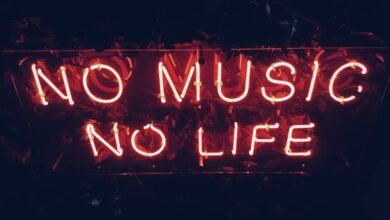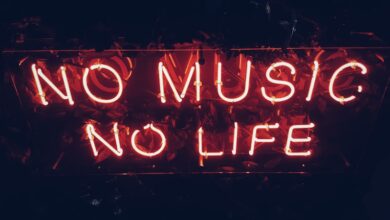Exploring the Impact of Music on Neurodiversity and Neurological Disorders

Music, a universal language that transcends boundaries, has long been recognized for its profound impact on human emotions and well-being. Beyond its enchanting melodies and captivating rhythms, music possesses an incredible power to influence and shape our neurological responses. In this article, we delve into the fascinating realm of neurodiversity and neurological disorders, uncovering how music can positively affect individuals with diverse cognitive abilities.
Neurodiversity encompasses a spectrum of neurological differences, including conditions such as autism, ADHD, dyslexia, and others. For individuals with neurodiverse traits, engaging with music can be transformative. Music’s rhythmic patterns and harmonies offer a structured and predictable environment, which can help individuals with neurodevelopmental conditions find comfort and regulate their sensory experiences. Moreover, music’s emotional resonance can facilitate emotional expression and communication, enabling those who struggle with verbal communication to convey their feelings through melodies and lyrics.
Research has shown promising results regarding the therapeutic effects of music on individuals with neurological disorders. For instance, in individuals with autism spectrum disorder (ASD), music therapy has demonstrated notable improvements in social interaction, communication skills, and reduced anxiety levels. By incorporating music into interventions, therapists provide a unique avenue for individuals with ASD to engage, connect, and express themselves more freely.
Furthermore, music’s impact extends beyond neurodiversity to encompass various neurological disorders. In cases of Parkinson’s disease, rhythmic auditory stimulation through music has proven effective in enhancing motor function and reducing gait disturbances. The brain’s response to music can bypass damaged neural pathways, allowing individuals with Parkinson’s disease to regain motor control and coordination.
In the realm of mental health, music has also shown promise as a complementary therapeutic approach. It can alleviate symptoms of depression, anxiety, and post-traumatic stress disorder (PTSD). Listening to soothing melodies or participating in music creation can foster a sense of calm, promote relaxation, and serve as a form of self-expression. The emotional release experienced through music can be cathartic, providing solace and support during challenging times.
The impact of music on neurodiversity and neurological disorders is both remarkable and far-reaching. By harnessing the inherent power of melodies, harmonies, and rhythms, we can unlock a world of possibilities for individuals with diverse cognitive abilities. Music therapy and engagement offer a unique channel for communication, emotional expression, and personal growth. As we continue to explore this fascinating field, let us embrace the transformative potential of music to enhance the lives of those affected by neurodiversity and neurological disorders.
Harmony in the Brain: How Music Unlocks New Pathways for Neurodiversity
Introduction:
Have you ever wondered how a simple melody can move us to tears or make us tap our feet involuntarily? Music has a profound impact on our emotions and behavior, but its influence goes even deeper. Recent research suggests that music has the remarkable ability to unlock new pathways in the brain, particularly for individuals with neurodiverse conditions. In this article, we will explore the fascinating connection between music and neurodiversity and uncover the transformative power of harmonious sounds.
The Rhythmic Brain:
Our brains are wired to respond to rhythm and melody. When we listen to music, various regions of the brain light up, coordinating a symphony of neural activity. For individuals with neurodiverse conditions such as autism, ADHD, or dyslexia, these brain responses may differ from those without such conditions. However, studies have shown that engaging with music can help bridge these differences, fostering connections and promoting harmony within the brain.

Unlocking Emotion and Communication:
Music has the extraordinary ability to touch us emotionally, evoking feelings of joy, sadness, or nostalgia. For individuals with neurodiverse conditions, who may struggle with expressing or understanding emotions, music becomes an invaluable tool. It provides a universal language that transcends words, enabling them to communicate and connect with others on a profound level. Through music therapy, individuals with neurodiversity can explore their emotions, develop social skills, and cultivate meaningful relationships.
Enhancing Cognitive Abilities:
Beyond emotional and social benefits, music also has a positive impact on cognitive abilities. Neurodiverse individuals often exhibit strengths in areas such as pattern recognition, attention to detail, or auditory processing. Music capitalizes on these strengths, providing a structured framework for learning and development. Playing an instrument, for instance, enhances fine motor skills, coordination, and concentration. Moreover, the structured nature of music can aid in improving memory, language comprehension, and mathematical abilities.
Creating Pathways for Neurodiversity:
As we unravel the mysteries of the brain, it becomes increasingly evident that embracing neurodiversity is essential for a harmonious society. Music acts as a bridge, unlocking new pathways and promoting inclusivity. By encouraging music education and integrating music therapy into treatment plans, individuals with neurodiverse conditions can be empowered to reach their full potential, fostering a world that appreciates and celebrates cognitive differences.
Conclusion:
In the symphony of humanity, neurodiversity plays a vital role, offering unique perspectives and talents. Through the universal language of music, we can unlock new pathways in the brain, fostering emotional expression, communication, and cognitive growth. Let us embrace harmony in the brain and celebrate the transformative power of music for neurodiversity, creating a more inclusive and understanding world.
Unleashing the Power of Sound: Transforming Lives through Music Therapy for Neurological Disorders
Can you imagine a world where the simple act of listening to music could bring relief to those suffering from neurological disorders? The power of sound has long fascinated and captivated us, but its potential in transforming lives through music therapy is truly remarkable.
Neurological disorders affect millions of people worldwide, impacting their quality of life and often leaving them searching for effective treatments. Traditional medical approaches have their merits, but there is something uniquely powerful about the therapeutic qualities of music. It reaches deep within us, stirring emotions and memories that can be otherwise elusive.

Music therapy harnesses this inherent power of sound to provide holistic support for individuals with neurological disorders. By engaging in carefully curated musical experiences, patients can experience a wide range of benefits. The rhythmic patterns and melodic structures of music can help stimulate neural connections in the brain, promoting cognitive functioning and enhancing motor skills.
For individuals struggling with conditions like Parkinson’s disease or stroke-related impairments, music therapy offers a lifeline. Through rhythm-based interventions, such as drumming or finger-tapping exercises, patients can regain control over their movements and improve coordination. The beat becomes a guide, syncing the body and mind in a harmonious dance of healing.
But the impact of music therapy extends beyond the physical realm. It taps into our emotional well-being, addressing anxiety, depression, and even memory loss. Listening to familiar melodies can evoke cherished memories and ignite a sense of belonging. It provides solace and comfort, acting as a soothing balm for the soul.

Imagine a stroke survivor who struggles with speech. Through lyric analysis and singing exercises, they can gradually regain their ability to communicate and express themselves. The words flow effortlessly, carried by the melody, giving voice to emotions and thoughts that were once trapped. It’s a powerful transformation—one that demonstrates the profound influence of music on our neurological pathways.
In the realm of music therapy, sound becomes a conduit for connection and healing. It breaks down barriers, transcending language and cultural boundaries. It empowers individuals to reclaim their identities and find joy amidst the challenges they face. The transformative journey begins with a single note—the catalyst that sets in motion a cascade of positive change.

As we continue to unravel the mysteries of the human brain, music therapy stands as a beacon of hope. Its ability to unleash the power of sound holds immense promise for those living with neurological disorders. Through this harmonious alliance, lives are transformed, one melody at a time.
Neuroscience Strikes a Chord: Discovering the Unique Connection Between Music and Neurodiversity
Have you ever wondered about the captivating power of music? How it has the ability to transport us to different emotional landscapes, evoke memories, and stir our souls? Well, recent studies in neuroscience have uncovered a fascinating link between music and neurodiversity, shedding light on the profound impact music can have on individuals with neurological differences.
Neurodiversity is a concept that recognizes and celebrates the natural variation in the human brain. It encompasses conditions such as autism, ADHD, dyslexia, and others. Researchers have long been intrigued by the way individuals with neurodivergent traits respond to music. What they have discovered is truly remarkable.
One key finding is that music engages multiple regions of the brain simultaneously, creating a symphony of neural activity. This is particularly significant for individuals with neurodivergent conditions, as their brains often exhibit heightened connectivity. When exposed to music, these individuals experience a harmonious integration of various brain networks, fostering improved focus, attention, and emotional regulation.
Moreover, music has been found to enhance communication and social interaction among those with neurodiverse characteristics. The rhythmic patterns and melodic structures of music provide a predictable and structured framework that can be highly beneficial for individuals with autism spectrum disorder, for example. Music therapy interventions incorporating rhythm and melody have shown promising results in improving social skills, expressive communication, and reducing anxiety.
In addition to its cognitive and social benefits, music also holds therapeutic potential for managing sensory sensitivities commonly experienced by individuals with neurodivergent traits. The auditory processing abilities of these individuals can be either heightened or challenged, and music can serve as a powerful tool to modulate and regulate sensory experiences. The carefully crafted harmonies and rhythms can create a soothing effect, helping individuals with sensory sensitivities find comfort and balance in their environment.
The emerging field of neuroscience has illuminated the profound connection between music and neurodiversity. Through its multisensory stimulation, music engages various brain regions, promotes social interaction, enhances communication, and offers therapeutic support for sensory sensitivities. As we delve deeper into this fascinating relationship, the potential for using music as a therapeutic tool in supporting individuals with neurodivergent traits becomes increasingly apparent. So, let us embrace the power of music and continue to explore the boundless possibilities it holds in unlocking the full potential of neurodiverse minds.
Rhythm as Medicine: Groundbreaking Research Reveals Music’s Profound Effects on Neurological Disorders
Did you know that music has the power to heal? Groundbreaking research has shed light on the remarkable effects of rhythm and melody on neurological disorders, opening new doors in the field of medical treatment. In this article, we will delve into the fascinating world of music therapy and explore how it can positively impact individuals with neurological conditions.
Imagine a symphony playing within your brain, orchestrating harmony and balance. That’s precisely what happens when individuals with neurological disorders engage with music. Scientists have discovered that music activates various regions of the brain, stimulating connections that may be impaired due to conditions such as Parkinson’s disease, Alzheimer’s, or strokes.
The rhythmic nature of music acts as a catalyst for the brain, engaging motor areas responsible for movement and coordination. It’s like a conductor guiding an orchestra, synchronizing the neurons and enhancing cognitive function. This phenomenon has been observed among patients with Parkinson’s disease, where rhythmic cues provided by music alleviate movement difficulties, enabling them to regain fluidity in their actions.

Moreover, music has shown exceptional capabilities in stimulating memory recall. Individuals suffering from Alzheimer’s disease often struggle with memory loss and cognitive decline. However, when exposed to familiar melodies or tunes, their memories are momentarily rekindled. It’s as if the sound waves act as keys unlocking forgotten doors, allowing precious memories to flood back, even if just for a fleeting moment.
Beyond motor skills and memory, music has a profound effect on emotional well-being. Think about how a particular song can evoke strong emotions, transporting you to a different time and place. Music can do the same for individuals with neurological disorders, providing an emotional outlet and reducing anxiety or depression often associated with these conditions.
The emerging field of music therapy offers hope and healing to those affected by neurological disorders. With rhythm as medicine, individuals can tap into the transformative power of music, revitalizing their minds and bodies. As researchers continue to uncover the wonders of this remarkable therapy, we can look forward to a future where melodies harmonize with medicine, offering solace and support to those in need.




